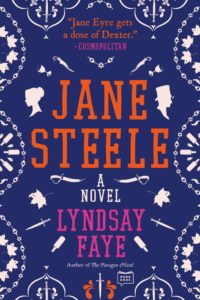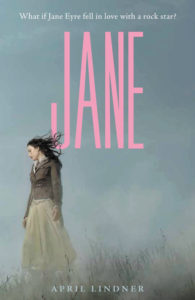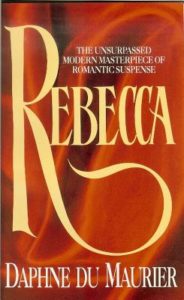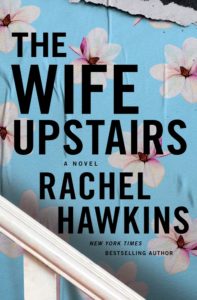In the right hands, the retelling of a well-known story performs something close to alchemy. It’s like hearing a song you love played in another key—familiar, but there are enough differences that it sounds new, makes you hear something in it you never heard before. When I sat down to write my own retelling of Jane Eyre, The Wife Upstairs, I knew I wanted to do something similar—not just to replay the beats of the original novel, but to take those elements and create something unique. The following five takes on Jane Eyre showed me it could be done, each one carrying the echoes of the original novel, but crafting it into five very different stories.

Jane Steele, by Lyndsay Faye
Reader, I murdered him.
As soon as you read that line, you understand the ground Faye is treading with her dark and gleefully fun take on Jane Eyre. But this isn’t a beat-for-beat remake. Faye’s Jane is a fan of Bronte’s novel, giving this Victorian Gothic a meta spin that makes it all the more satisfying. Like Jane Eyre, Jane Steele is a poor orphan, tormented by relatives as well as evil school officials, but they’re in for a nasty shock when it turns out Miss Steele has a violent streak.
One of the most enjoyable parts of this book is seeing those echoes of Jane Eyre—the big house, its brooding master and his secrets—, but watching as Faye takes those beats into new and interesting territory, weaving a story that ends up being very different from the original Jane’s but every bit as thrilling.

The Eyre Affair, by Jasper Fforde
While this isn’t exactly a retelling of Jane Eyre, it is one of the twistiest takes on our Victorian heroine. Set in an alternate future where England and Russia are still locked in the Crimean War, The Eyre Affair is centered on the excellently named Thursday Next, a “literary detective,” tasked with solving the kidnapping of Jane from her own book. As Thursday works to help rescue Jane (and restore all copies of Jane Eyre- once Jane is kidnapped, she disappears from the story), she has to deal with time travel, plasma rifles, and the appearance of one Edward Fairfax Rochester, a man very determined to get his Jane back.
The Eyre Affair is absurd in the best possible way. Wildly imaginative, engrossing, and hilarious, this might be the most original take on Jane Eyre out there.

Jane, by April Linder
Taking Charlotte Bronte’s quintessential brooding hero and turning him into an equally brooding rock star just feels right, and April Linder’s modern update of Jane Eyre captures the dark romanticism of Rochester and Jane’s love story perfectly. In this version, Edward Rochester is now Nico Rathburn, a famous musician about to make his comeback. Jane is still Jane, a poor college student here who, following the deaths of her parents, takes a job as nanny for Nico’s daughter, Maddy. Obviously, sparks fly, but like his Victorian predecessor, Nico has a big secret.
This retelling is maybe the most faithful of all of them, following Jane’s original story closely, but Lindner manages to up the swoon factor and she doesn’t shy away from how moving Jane’s story into modern times increases the forbidden aspects of Jane and Rochester’s relationship.

Wide Sargasso Sea, by Jean Rhys
The first and arguably most important of Jane Eyre retellings, Wide Sargasso Sea gives us the story of Antoinette Cosway—later Bertha Mason, Jane Eyre’s famous mad woman in the attic. Following Antoinette from her childhood in colonial Jamaica to her disastrous marriage to Edward Rochester, Rhys shows us just how a woman might become “mad,” as she loses her family, her husband’s love, her name, her freedom, and, eventually, her sanity.
In giving Rochester’s first wife her voice, Rhys completes the third part of one of literature’s most twisted love triangles, and once you read it, you can never read Jane Eyre the same way again.

Rebecca, by Daphne Du Maurier
Is Rebecca a retelling of Jane Eyre? Well, no, not technically. But Jane’s ghost haunts the edges of Du Maurier’s Gothic classic just as surely as the first Mrs. de Winter, and this story of an innocent and naïve young woman falling for a wealthy and tortured man with secrets- and a really nice house- is clearly Jane Eyre’s spiritual successor.
Our unnamed heroine is every bit as “poor, obscure, plain, and little” as Jane herself, but like Jane, she has hidden wells of strength when push comes to shove. Swept away to Maxim de Winter’s gorgeous manor, Manderley, Rebecca’s heroine may not literally discover a wife in the attic, but Rebecca de Winter’s presence is everywhere, and it’s clear that Maxim is hiding something. The reveal of that secret- and how our heroine handles it- prove that she could go toe-to-toe with Jane any day.
***


















